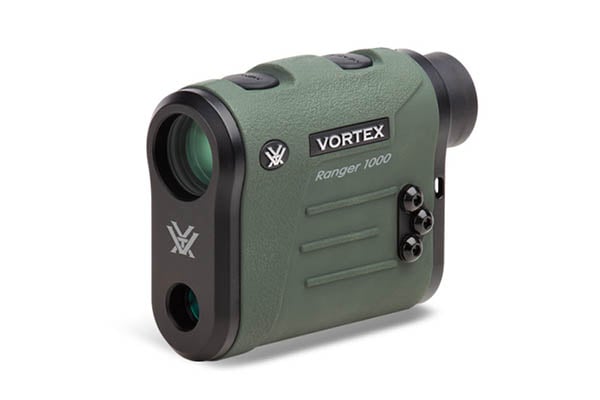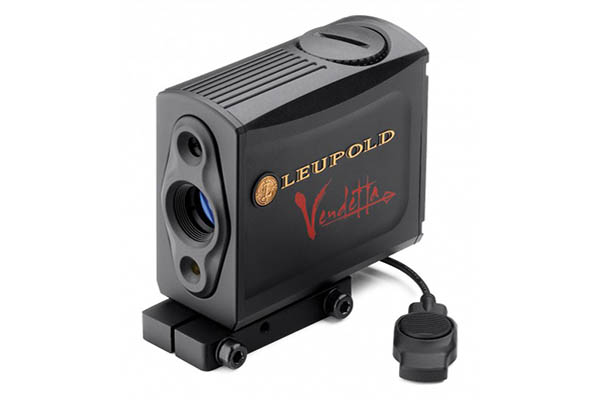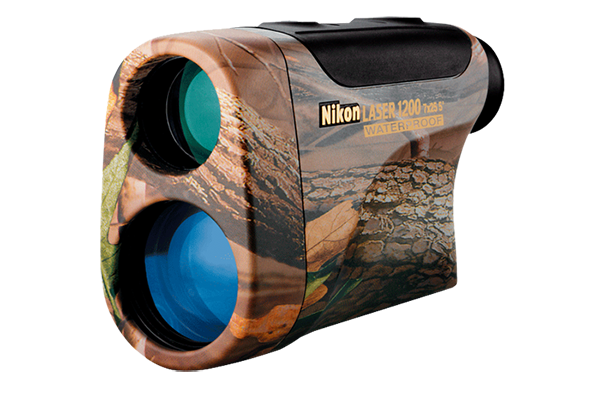
Last Updated on
By Pete Rogers
When rangefinders first were introduced into the hunting market, they were big, cumbersome and very expensive. As time has moved on, the progression of the range finder has advanced dramatically. Over the last decade or so, more and more advanced technology has been introduced into the units while keeping the price point pretty much stagnant. Meaning, that we are getting a whole lot more for our buck when it comes to range finders.
Laser rangefinders work by sending a very small laser to a distant object, this laser reflects back to the unit and the time it takes for this to happen calculates the distance. Since light is pretty fast, it doesn’t take long for this to happen. As the technology has advanced the size of the units has gone down and the options the units offer has increased.
Hunters looking to select a quality range finder need to answer a few questions for themselves before they take the plunge. We will look at this process of selecting a good rangefinder for hunting.
First, what will be the predominant use for the rangefinder? If you are an archery hunter from the southeast, your options are different than a western hunter who plods across plains in search of pronghorn and mule deer. Hunters in the east really do not need a rangefinder that can detect a gnat at 1500 yards. But they will need one with angle range compensation. This automatically calculates the distance and the angle at which you are shooting and makes the mathematical adjustments for you. Basically it calculates the hypotenuse for you at the speed of light. For example, if a deer is at 23 yards, and your tree stand is twenty four feet high, your shooting distance is 21 yards. This capability can make the difference between a miss or a hit, or worse, a marginal hit verses a fatal one. Hunters who primarily use spot and stalk techniques do not need the ARC technology for their uses, rather they need one that will really reach out there to extreme distances.

As the distance grows so too does the ability for reflection. Many objects we want to range are just not very good at sending the laser back to the units. Brush, rocks, grasses are difficult to range because their reflectivity is so poor. Many of the units that are designed for these ranges excel at being able to reflect most objects. Nikon, Zeiss, Leica, Vortex and Bushnell all make excellent extreme rangefinders that will work for these situations.
The second question is will you be using the rangefinder for rifle or bow hunting or both? This too can make a difference when selecting the one that is right for you. Or if you are like me, and only want to buy one that will do it all, those are available also.
Fortunately, all of the top optic brands offer high quality rangefinders in many different price points. Nikon, Leupold, Vortex, Leica, Zeiss, Bushnell all offer high quality rangefinders. Some of these brands do not offer angle range compensation (ARC) and others do on some models.

Nikon is the number one selling rangefinder on the market, and everyone else is a distant second. Nikon offers several models to choose from. With range calculations out to fifteen hundred yards, these hand held rangefinders are exceptional. Bushnell, offers a rangefinder the GForce1300 that is as diverse as they come. This rangefinder not only has an archery mode that incorporates ARC, it also has a ballistics mode for rifle hunters that allows the user to select from one of the ten most common calibers and bullets and calculates your elevation adjustments. For example, I shoot a Remington 700 in 30-06 with a 150 grain bullet. Using the manual, I choose selection ‘G’ for the .30-06 and 150 grain bullet. This selection will tell me when shooting at a target at 300 yards, that I need aim +3.5. Now I do not have to think or calculate the math in the heat of the moment, I can see the numbers, aim 3.5” high and be dead on my target.

Zeiss, Leica, Sworvoski, and a few others also offer binocular with built in range finding capabilities. For those who will be doing a lot of spotting this can be a great asset. Most of these units are pretty big and heavy for extended use. But some will like this dual capability.
Eastern hunters traveling out west really need the security of a quality rangefinder. The topography is so different, judging distance is extremely difficult. Southern hardwoods are easy to judge distance in because there is seldom a shot beyond forty yards. But pronghorn hunting in Wyoming is different and there is nothing to use as a reference, an antelope that looks four hundred yards may actually be 150. While a mule deer that looks 150 may really be five hundred yards away. As a competitive archer, I am pretty good at judging yardage, but a recent trip hunting elk in Colorado showed that the terrain, and topography can drastically affect everyone’s ability to judge yardages accurately. A mule deer that I guessed to be over five hundred yards away measured almost half that distance. This experience alone proved that I personally need the assistance of a quality range finding unit, especially when traveling to different states with different terrain.

Personally, I am a proponent of hunters being able to judge yardage on the fly, but I am also someone who believes that we should never take a shot that we are not certain will make a fatal kill on any animal. Knowing the distance is critical to making clean ethical shots. Regardless of whether you are a bow hunter, rifle, and muzzleloader or handgun hunter. Knowing the actual yardage is essential to making clean ethical shots on game.
Some other brands that have come onto the scene recently offer excellent range finder quality. Vortex, Halo, and even some of the more established brands have just recently gotten into the rangefinder market, Zeiss, Leica both offer some of the best glass in the industry and their mathematical rangefinders can calculate the distance extremely fast. Hunters and shooters should consider their options before purchasing and make a good decision based on where they will most likely use their unit and what it will be used for before purchasing. When the decision is made on what type, n ow choose a top brand from a reputable retailer. Rangefinders will continue to improve and the technology will increase, all making it possible for hunters from every walk of life to make good clean and ethical shots on game.




Leave a Reply